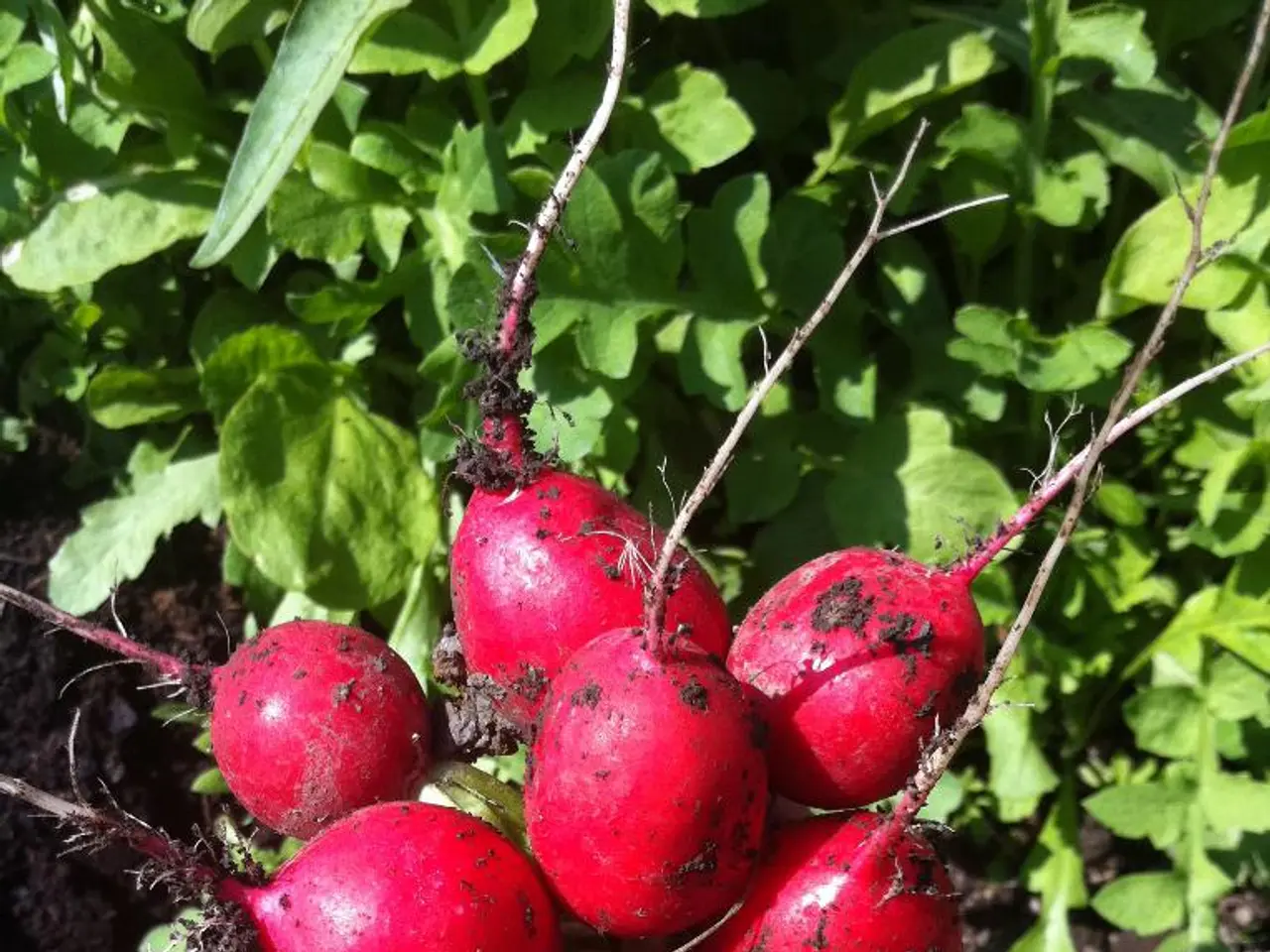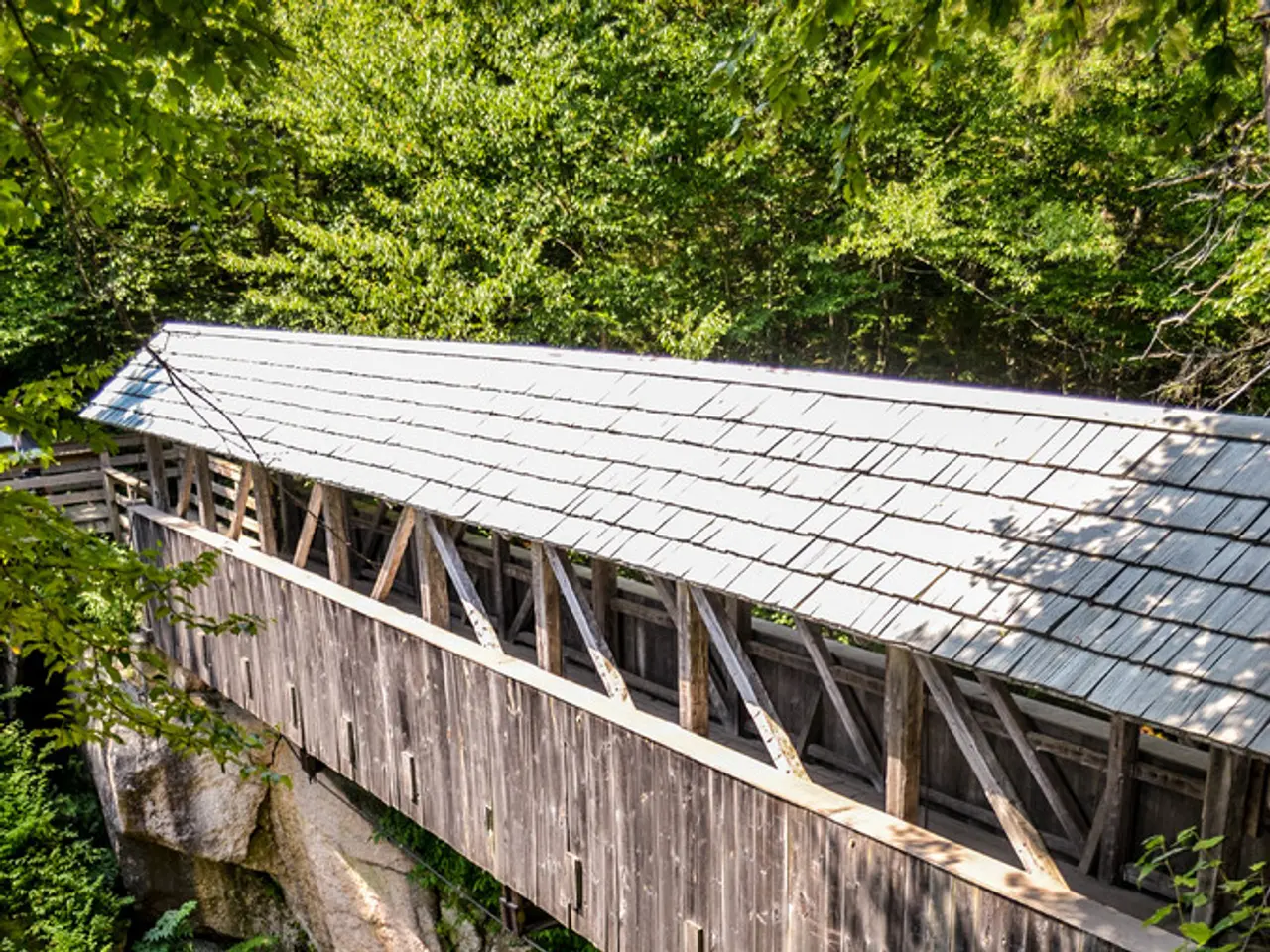Guide for Cultivating Beetroot Plants
Growing beetroot in your own garden can be a rewarding experience, as these vibrant root vegetables offer a sweet and earthy flavour that can enhance many dishes. Here's a step-by-step guide on how to grow beetroot successfully.
Beetroot can be grown in pots using sifted garden soil or high-quality compost such as John Innes No. 2. If you prefer to start with beetroot plug plants or seed sown in modular trays, they can be transplanted to the growing site later on. For outdoor sowing, beetroot seeds should be sown from mid-April to late June, in a shallow drill, 1cm deep, with seeds spaced 10cm apart and rows 30cm apart.
When it comes to choosing the right variety, there are numerous colours to choose from, including orange, yellow, and pink. Some popular options include 'Boro' (classic red, large and tender), 'Formanova' (cylindrical shape), and 'Chioggia' (cylindrical with a bullseye pattern). For a unique twist, consider 'Beetroot 'Blankoma', a white-rooted variety with round or conical roots and an earthy flavour.
For the sweetest flavour, beetroot should be harvested when the roots are the size of a golf ball. When thinning out beetroot seedlings, one plant should be left roughly every 10cm for cricket-ball sized roots, or kept closer together for golf-ball sized roots.
To grow beetroot successfully, plant them in loose, loamy, well-draining soil with a pH between 6.0 and 7.0. Add compost to enrich the soil but avoid manure to prevent excessive nitrogen, which can inhibit root development. Beets require at least 6 hours of sunlight daily for optimal growth, though they can tolerate partial shade with slower development.
When it comes to care, remove rocks and clumps in soil to allow uninhibited root growth. Thin seedlings early to give each beet space to grow, and maintain consistent soil moisture without waterlogging. Succession planting can yield beets quickly and continuously.
Beetroot can be stored indoors in a cool shed, placed in a box filled with relatively moist sand or compost, and covered with a thick layer of straw or cardboard, held in place with horticultural fleece or netting secured with bricks. Store only undamaged beetroots.
After lifting, the stems and foliage of beetroot should be twisted off by hand. The leaves of beetroot can be used fresh in salads or wilted and used like spinach. Beetroot should be watered regularly to reduce the likelihood of the roots becoming woody or splitting.
Some popular varieties, such as 'Beetroot 'Boltardy' and 'Beetroot 'Chiogga', have unique characteristics that make them stand out. 'Beetroot 'Boltardy' is resistant to bolting and can be sown earlier than many other varieties. 'Beetroot 'Chiogga' has orange-pink skins and red and white rings on the flesh, which fade to pink when cooked.
However, beetroot seedlings can be attacked by slugs and snails, and birds can pull them out of the ground. Protective measures such as biological-control nematodes, crushed eggshells, or netting may be necessary.
In summary, choose well-draining soil with moderate pH, ensure plenty of sunshine, select suitable varieties, and manage planting density carefully to grow healthy beetroots. With a bit of care and patience, you'll be enjoying home-grown beetroot in no time!
Tending to your home-and-garden can be enriching with the addition of a relaxing garden activity like gardening. Cultivating vibrant beetroot in your home-and-garden could be a promising venture, as they offer an earthy flavor that can elevate a variety of dishes, and their growth process can be as fulfilling as the final produce.




